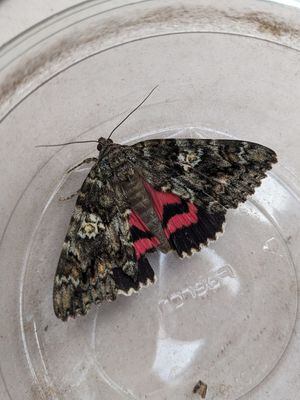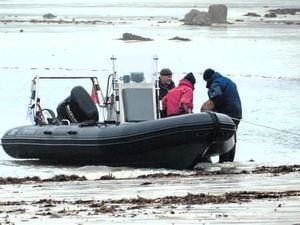Dark crimson underwing is a new moth species for Alderney
A NEW moth species has been spotted in Alderney.

The dark crimson underwing was caught last week in a moth trap by Alderney Wildlife Trust.
‘This is the first time we have seen this moth species in Alderney,’ said terrestrial ecologist Matt Lewis.
‘Initially we thought it was new to the Bailiwick, but we now know there have been several sightings in previous years in Guernsey.’
The species name comes from the red patterning on the moths’ underwing, which they flash to startle potential predators.
The species relies on mature and ancient oak trees to breed and feed and is rare in England, where it is only found in parts of Wiltshire and the New Forest.
‘We think this is just a one-off,’ said Mr Lewis. ‘It is probably just a migrant that has come across with the prevailing weather, and we don’t think its breeding.
‘They feed and live on oak trees, which we have in Alderney, but probably not enough for a breeding population.’
The new species of moth was caught as part of weekly traps arranged by the trust as part of a national Citizen Science project aiming to monitor changes in moth populations overtime.
Although this is a new species, Mr Lewis said that moth numbers were generally down on last year.
‘We are still analysing data, but anecdotally numbers are different to last year, with much less abundance,’ he said.
‘This could be natural cyclical patterns or it could be reflected in the weather.
‘Moths in particular don’t like stormy cold weather and will be less active with less breeding. In general female moths stay in one place and attract males using pheromones, so windy weather effects the females’ ability to attract males.’
Mr Lewis said that the impact of global warming would mean more extreme weather patterns would become more commonplace.
‘Be that windy spells or spells of dead calm. Climate change means we are losing the predictability of our weather, which will have an impact on insect species.’





